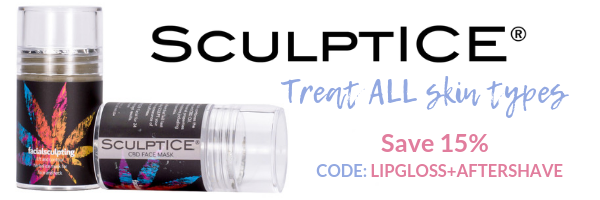Get Great Skin: Understanding The Lipid Barrier
by Alexandra Trait
What is the lipid layer of the skin?
The skin’s lipid barrier defense is made up of oil from the sebaceous glands and water from the internal free water levels in the skin. Your oil flow is meant to be quite light and watery, with adequate hydration, your skin’s free water pushes that oil up through the hair follicles and the emulsion of water and oil spreads across the skin, forming the skins bi-lipid barrier.
Your Skin's 3 Forms Of Defense
The first line of skin barrier defence
The first line of skin barrier defense is the acid mantle & microbiome. The microflora contains the properties that prevent non resident bacteria from developing while also helping to buffer the action between acidic and alkaline chemicals.The microflora can only live in a PH of around 5.5, The acid mantle prevents toxic matter from being absorbed by the skin.
The second line of skin barrier defence
The second line of skin barrier defense is the stratum corneum. Not just simply a layer of dead skin cells but cells that play a pivotal role in contributing to the microbiome & acid mantle and also to communicate to underlying cells.
The third line of skin barrier defence
The third line of skin barrier defence; the permeability barrier-formed by the keratinocyte during its development through the epidermis releasing all oil & water into the intracellular space.
What Is The Skin Barrier Function?
It is commonly referred to as the lipid barrier. First and foremost, when you have a strong and healthy barrier, Transepidermal Water Loss is eliminated. All hydration and skin food is locked in and can’t be pulled from the skin by external factors.
A healthy lipid barrier also satiates the skin in terms of hydration.
An example. When dealing with a condition such as acne, a lot of clients use products to dry up the oil. They also over exfoliate the skin, stripping the skin of its lipid barrier.
The skin then thinks it is dry and needs more hydration. The skin forces the sebaceous glands to produce more, continuing the vicious cycle.
It’s best to eliminate that cycle entirely! Provide enough water and lipids into the skin and everything falls back into place! Water pushes oil up through the hair follicles to created the lipid barrier.
How do you know if your skin barrier is damaged
Alexanra’s Pro Tip
Over the years of my skin care career, I’ve discovered an easy way to tell if the skin’s barrier is damaged. I lightly run my fingers over the skin and see if it has a ‘static’ touch to it.
Signs Of A Damaged Lipid Barrier
- Redness 100%
- Inflammation 100%
- Dry Flaking Skin 100%
- Unable To Retain Hydration 100%
- Acne 100%
These are just a few of the visible signs. It’s important to remember that a lipid barrier that is impaired can present with all sorts of issues. Keep an eye out for skin that is unable to retain hydration and moisture no matter how much moisturizer you apply. If clients present with acne, that is another side effect of an impaired lipid barrier. Finally, without an intact lipid barrier, bacteria can easily penetrate the skin and nestle in. Applying products to the skin will mostly sting or burn and cause redness.
What Ingredients Repair The Skin Barrier?
When keeping the lipid barrier functioning properly, the number 1 products would be EFA’s (Essential Fatty Acid Supplements) to ensure cell membrane integrity and to produce optimally healthy skin. Soybean oil is great, it contains the 8 essential amino acids. Oat kernel is also another ingredient that you can look for in products. It contains healing polysaccharides from the Beta Glucan family.
If you want great skincare products that contain EFA’s check out our Winter Skin Care Guide There are also some great products to check out in our recent article on Probiotics!
Why A Healthy Lipid Barrier Is Key To Great Skin?
If you want great skin, it’s vital that you have a healthy, intact lipid barrier. This ensures that your skin is hydrated and that it’s able to protect against bacteria from entering. The lipid barrier also communicates with the cells underneath! It regulates turnover and keeps the skin protected! It communicates to the microbiome and keeps all the millions of bacteria that supports our bodies in check. It really is eternally fascinating and is a crucial step in creating long term solutions to debilitating skin dysfunctions.

Guest Blogger – Alexandra Trait
At 27 years old, Alexandra is both an international & local award winning paramedical skin specialist and owner of a thriving Skin Clinic in Castlemaine, Australia. Her passion for this industry comes from battling through her own acne journey and inspired her to help others bring back their confidence, encompassing a ‘whole’ approach to achieving transformative results…Read More.

